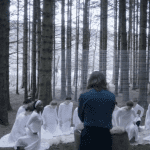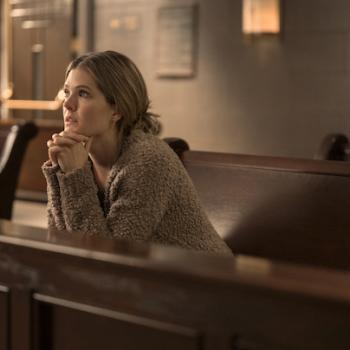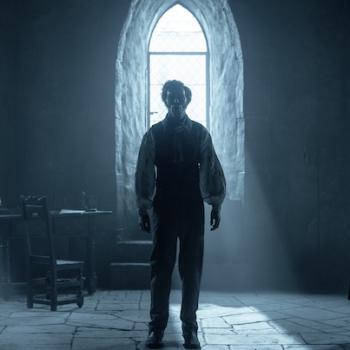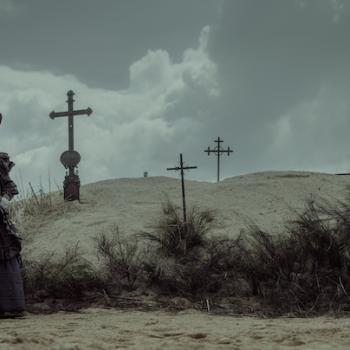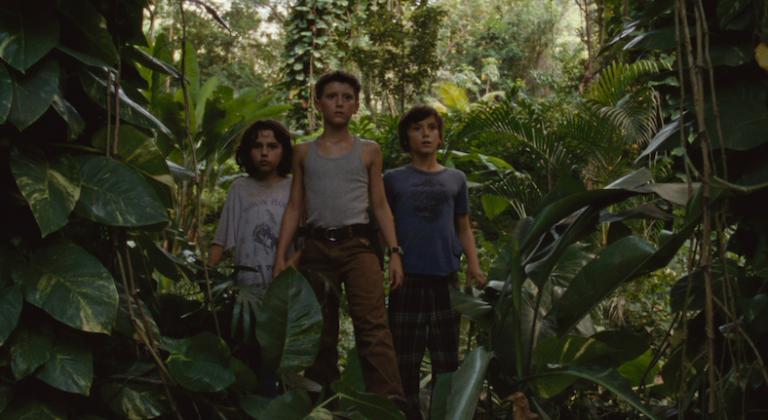
Wendy and her twin brothers, John and Douglas, live with their mother in some poor, indeterminate section of the South. The mom, Angela, owns and helps run Darlings’ Diner, where she and another woman feed and sometimes entertain a collection of locals. She and her brood live upstairs, where Wendy sometimes stares out the window at the trains that thunder through.
Sometimes a bone-weary Angela tells her three kids bedtime stories. But she doesn’t seem to talk much about her own past. And when one of her twins asked her what she used to dream of doing—of being—when she was younger, she says that she always wanted to “ride the rodeo.” Now her dreams are made of simpler stuff.
“Taking care of my tribe,” she says. “Making sure I don’t screw you up too bad.”
Her children find those dreams hopelessly lame. But Angela tells them—wearily, but not unkindly—that dreams change. People grow up.
That wistful sense of adulthood and the losses it entails lies at the core of Wendy (as, really, it does with the original Peter Pan). Wendy and the boys look at their mom and see all that she’s lost as she grew up and out of her dreams. She’s stuck there in the diner, cooking bacon and serving coffee to the same dusty codgers, day after day. Her world seems, to her children, impossibly and depressingly small: She lives in a prison made of age and compromise, her dreams of rodeo long since faded.
The train—the dark force that shoots through their small corner of the south like an occasionally pausing arrow—is their means of escape. And when they see a strange little boy standing on the train and beckoning them aboard, they follow.
They eventually make their way to Neverland, of course, where they meet a few other kids who refuse to grow up (including an old neighbor of theirs who disappeared after muttering he didn’t want to become the diner’s “mop and broom man” when he grew up). They see Mother, Neverland’s mysterious spirit who lives and glows under the water. And eventually, they encounter a really depressing commune of old people—refugees who grew sad and tired and immediately aged out of Neverland’s youthful embrace.
They, too, live in a prison of sorts—the dusty, volcanic leftovers of Neverland, lacking the rest of the island’s green youth and vitality.
But as Wendy discovers and tries to teach, they don’t lose it because they’re old. “There’s nothing wrong with being old,” she insists. It’s that they lost a spark of youth deep inside them.
That metaphorical spark, incidentally, is in some ways quite literal here, embodied by the glowing heart of Mother. She’s old, too—impossibly, unfathomably old, so old that her skin is covered with all manner of growths and barnacles and coral. And yet she’s so alive, so vibrant, that she seems to power the whole island and keeps Peter eternally young.
The movie seems initially to pit youth against age, and indeed the oldsters become the movie’s antagonists for a season. But Wendy has a deeper motive in mind, all embodied by her faded “Prison Rodeo” T-shirt.
Age can be a sort of prison, the movie suggests. We do lose something in the process of growing up. But the movie also reminds us, explicitly, that growing up is a great adventure in its own right, and one filled with its own joys. Motherhood is particularly vaunted here: The same glow found in the island’s strange Mother can be found in Angela, too—Wendy’s mom whom she dearly loves and sorely misses.
And while Neverland’s aging inhabitants have lost their spark, they only need it rekindled—through imagination, through song. To gain a few wrinkles doesn’t mean to lose one’s life.
If age can be, in a way, a prison, you can still hold a rodeo inside.



